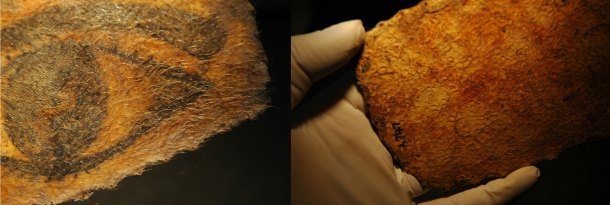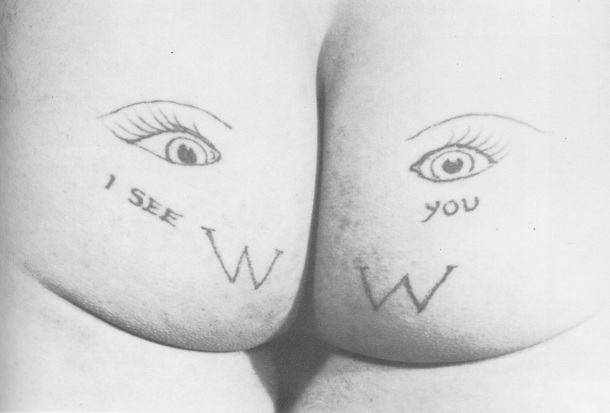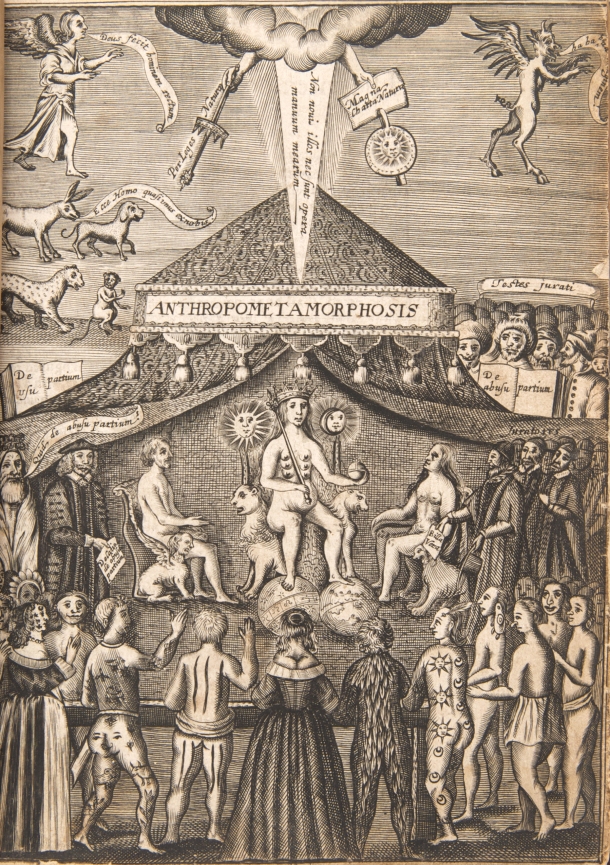The sailors’ tattoo has long captured the wider cultural imagination, but certain motifs go back much further than the 19th century, when the sailor tattoo became something of a trope within popular culture.
Of all the popular tattoo motifs, sailors’ tattoos are amongst the most iconic within Western culture, going back at least two hundred years. Indelible images bound up with seafaring life – ships ‘Homeward Bound’, fouled anchors, nautical stars, mermaids and creatures of the sea, the heart pierced by a dagger – all these designs are familiar, holding common symbolic currency for the tattooed and the non-tattooed alike. From Hermann Melville’s 1851 classic Moby Dick, to 2003 Hollywood blockbuster Pirates of the Caribbean, the sailors’ tattoo has long captured the wider cultural imagination. The Wellcome Collection contains many examples of the typical sailors’ tattoos mentioned above. However, there is one particular sailor tattoo that has remained relatively ‘hidden’ from public view.

A pair of tattooed eyes. Preserved human skin (Science Museum Object no.s A747 & A754). Photograph © Gemma Angel, courtesy of the Science Museum, London.
The two tattoos pictured above presented an interesting interpretative challenge when I first came across them. Catalogued and stored separately, no comparisons or connection had previously been made between the two, and yet both samples were so strikingly similar that I immediately suspected that they must have come from the same body.
Analysing the condition of the skin and the tattoos more closely revealed useful clues as to exactly which part of the body they may have come from. When handling them, I found the skin to be hard, non-pliable and unusually thick. Turning the skin over, the reverse side reveals a textured pattern of rounded depressions. This ‘dimpling’ is caused by relatively large adipose cells, which have left an impression in the connective tissue, or fascia, as the skin has dried – suggesting that this skin has been removed from a fleshy area of the body such as the buttocks. Both skins are also exceptionally hairy, covered with a layer of short, curly-ish hair. The tattoos are almost identical in style and scale, and appear to form a pair. Each skin has one large eye, with short eyelashes and thick eyebrows. When placed side by side, the orientation of the eyebrows indicate that A754 is the left eye, and A747 the right eye. Given the scale of each eye, and that they have been collected as separate specimens, this further suggests that they came from the buttocks, where it would not have been possible to remove one continuous section of skin which preserved both tattoos intact.

Detail showing thick hair coverage on the skin surface (left), and the pattern of rounded depressions on the reverse of the skin (right). Click to enlarge. Photograph © Gemma Angel, courtesy of the Science Museum, London.
Though tattoos such as these would have largely remained hidden by clothing during life, there are nevertheless historical references to this particular tattoo motif. Known as the ‘King of Tattooists’ and a highly successful early professional, British tattooist George Burchett (1872-1953) relates this encounter in his memoirs:
A sailor breezed in, a tall, strapping boy, fresh from a long voyage to the Far East. He just wanted two eyes tattooed. Two bright blue eyes like his own. That seemed simple enough. I told him it would not take long and mentioned the fee he would have to pay. The boy looked round, went to the couch and let down his bell-bottom trousers. ‘I want the eyes tattooed on my buttocks; one on each cheek and looking straight ahead.’ It took me a moment to recover. ‘Why on earth do you want two eyes glaring out of your bottom?’ I asked. ‘To be able to see what’s happening behind my back,’ he replied. ‘Some sauce, you wouldn’t be able to see much when you were sitting down,’ I told him. [1]
Whilst there is certainly an element of bawdy humour behind this design, authors Scutt and Gotch suggest that such motifs ‘probably sprang from naive superstition, akin to warding off the evil eye.’[2] A surgeon captain and dermatologist in the Royal Navy, Ronald Scutt describes the eyes-on-the-buttocks tattoo as ‘not uncommon’, and reproduces two photographic examples in his book Art, Sex and Symbol, one of which is shown below.

Photograph from R.W.B Scutt & Christopher Gotch, ‘Art, Sex and Symbol. The Mystery of Tattooing’ (1986), p.101.
Contemporary examples of this kind of tattoo can still be found, as a quick Google search will reveal. But what is perhaps more surprising, is that this motif goes back much further than the 19th century, when the sailor tattoo became something of a trope within popular culture.
The image below shows the 1653 engraved frontispiece from John Bulwer’s rather fantastically titled Anthropometamorphosis: Man Transform’d, or the Artificial Changeling. Historically presented, in the mad and cruel Gallantry, foolish Bravery, ridiculous Beauty, filthy Fineness, and loathesome Loveliness of most Nations, fashioning & altering their Bodies from the Mould intended by Nature. With a Vindication of the Regular Beauty and Honesty of Nature, and an Appendix of the Pedigree of the English Gallant. The frontispiece depicts various peoples of the world, their bodies modified according to cultural tradition, including tattoos, scarification, earlobe stretching and piercing. Most intriguing, perhaps, is the figure in the foreground second from the left, who can be clearly seen to have a pair of eyes tattooed on his buttocks. ■

Frontispiece to John Bulwer’s Anthropometamorphosis: Man Transform’d, or, The Artificial Changeling (1653)
